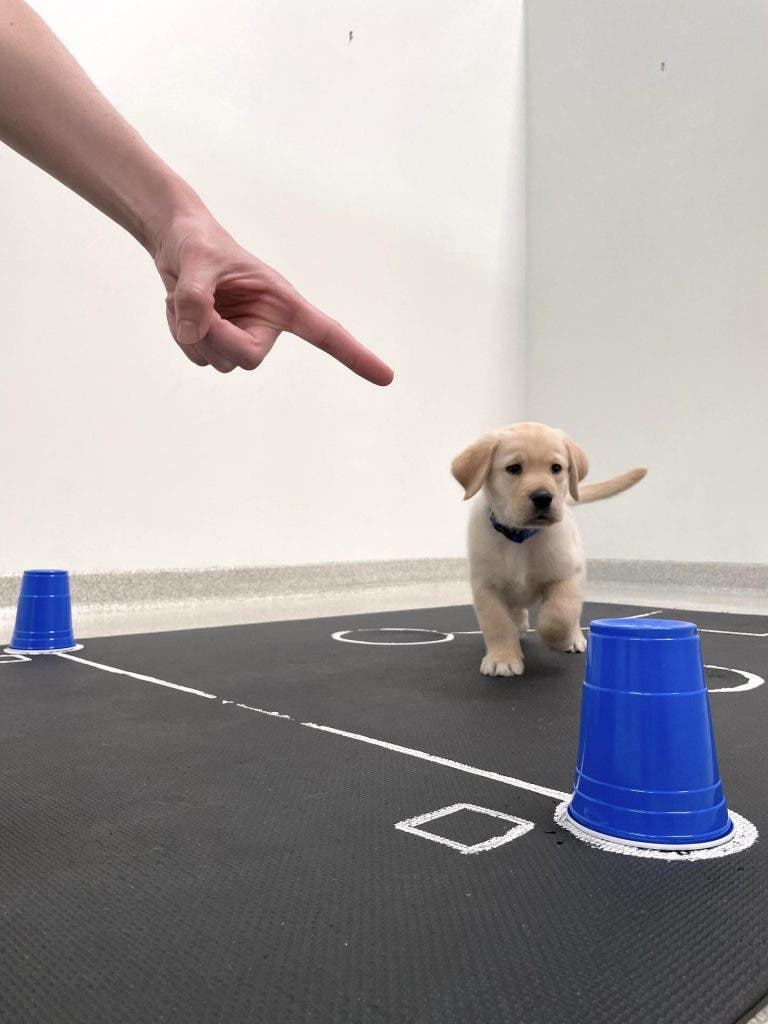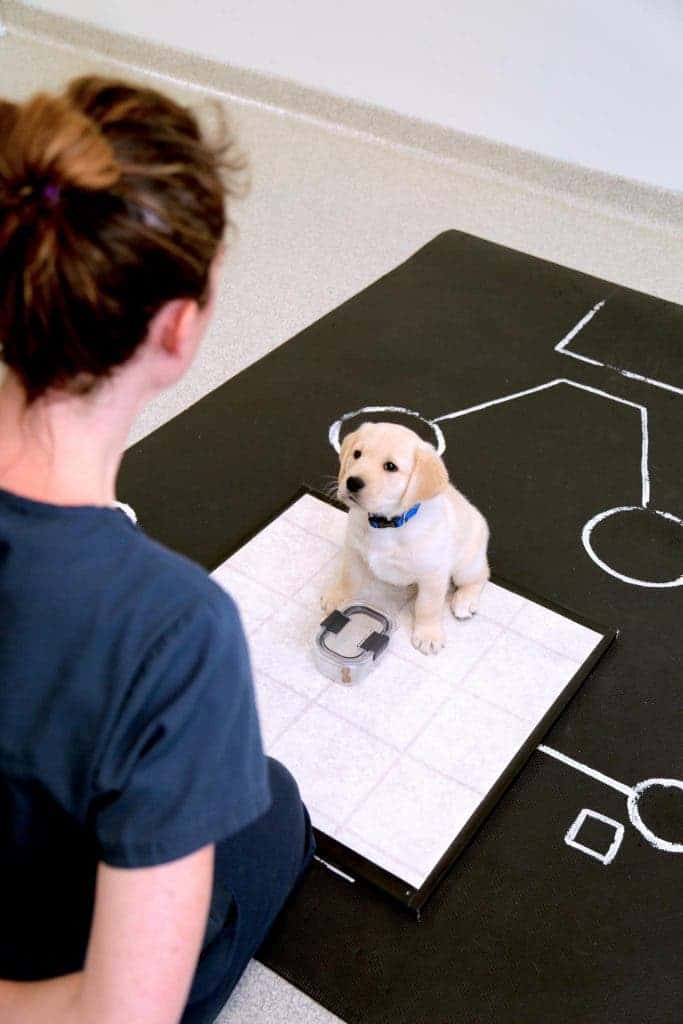
Apart from barking, whimpering, and muttering in various tones, dogs aren’t too big on vocal communication. But despite this shortcoming, dogs and humans are able to communicate remarkably well. Humans issue commands and dogs will tend to follow. Dogs will also issue their own commands, pawing their humans to get pets or barking while standing next to the door to signal it’s time to go for a walk. Now, researchers report that this amazing ability to interact with people is present in canines from a very early age. What’s more, this communication link between puppies and humans requires little, if any, training.
A good boy from an early age
For more than a decade, Emily Bray of the University of Arizona and colleagues have been conducting all sorts of research with dogs, particularly with those from Canine Companions, the largest service dog organization in the U.S. for people with physical disabilities. Ultimately, they’d like to learn how to improve the performance of service dogs, which requires a better understanding of how dogs think, solve problems, and communicate.
One important question the researchers attempted to investigate for this present study was how much of this capacity for communication is explained by biology. To this aim, they were fortunate enough to have access to hundreds of budding service dogs that were all starting out at the same early age. This setup allowed the researchers to constrain the experimental conditions quite nicely since all the puppies had virtually the same reading history and a known pedigree that can be traced for multiple generations. Seeing how the degree of relatedness between the puppies was known, this information could be then used to plot genetic versus environmental factors when assessing certain outcomes, such as communication abilities.

In total, the researchers worked with 375 eight-week-old puppies — 98 Labrador retrievers, 23 golden retrievers, and 254 Labrador golden crosses from 117 different litters — that had to perform the same tasks. For instance, one such task involved finding and bringing back an object such as a cup pointed to by a human.
All the puppies ultimately completed the task successfully, even when the odor of the object to be retrieved was masked. This shows that dogs are able to perform social communication from a very early age using gestures and eye contact. However, the puppies were only successful when a person initiated the interaction by speaking in a high-pitched voice, typical of humans addressing cute babies. Without the human initiating the interaction, the puppies didn’t look to people for help in completing a task in which food was locked in a Tupperware container.
“We show that puppies will reciprocate human social gaze and successfully use information given by a human in a social context from a very young age and prior to extensive experience with humans,” said Bray in a statement. “For example, even before puppies have left their littermates to live one-on-one with their volunteer raisers, most of them are able to find hidden food by following a human point to the indicated location.”
A statistical model employed by the researchers suggests that 40% of the variation in a puppy’s ability to follow a human’s finger-pointing or gaze can be explained genetically. The genetic component is likely even greater between more distantly related breeds. We know from previous research that breeds of dogs that were initially selected for cooperative work (like sheepdogs) are much better at following a person’s point than breeds selected for other kinds of work like guard dogs, hounds, or sled dogs).
In the future, Bray would like to identify some of these specific genes that are involved in such behaviors. The researchers have already collected blood samples and cognitive data, which will come in handy for a genome-wide association study.
“From a young age, dogs display human-like social skills, which have a strong genetic component, meaning these abilities have strong potential to undergo selection,” Bray said. “Our findings might therefore point to an important piece of the domestication story, in that animals with a propensity for communication with our own species might have been selected for in the wolf populations that gave rise to dogs.”
The findings appeared in the journal Current Biology.









